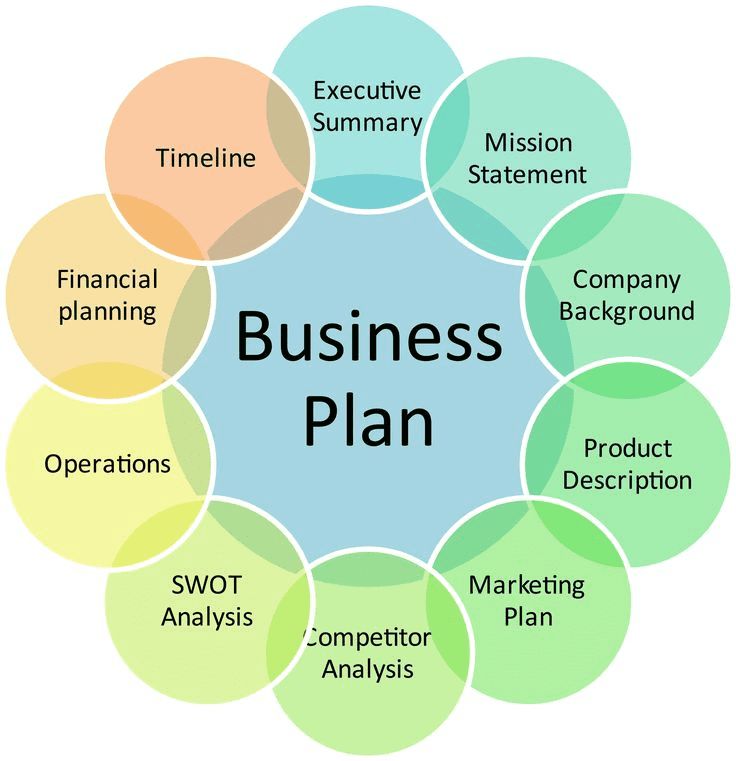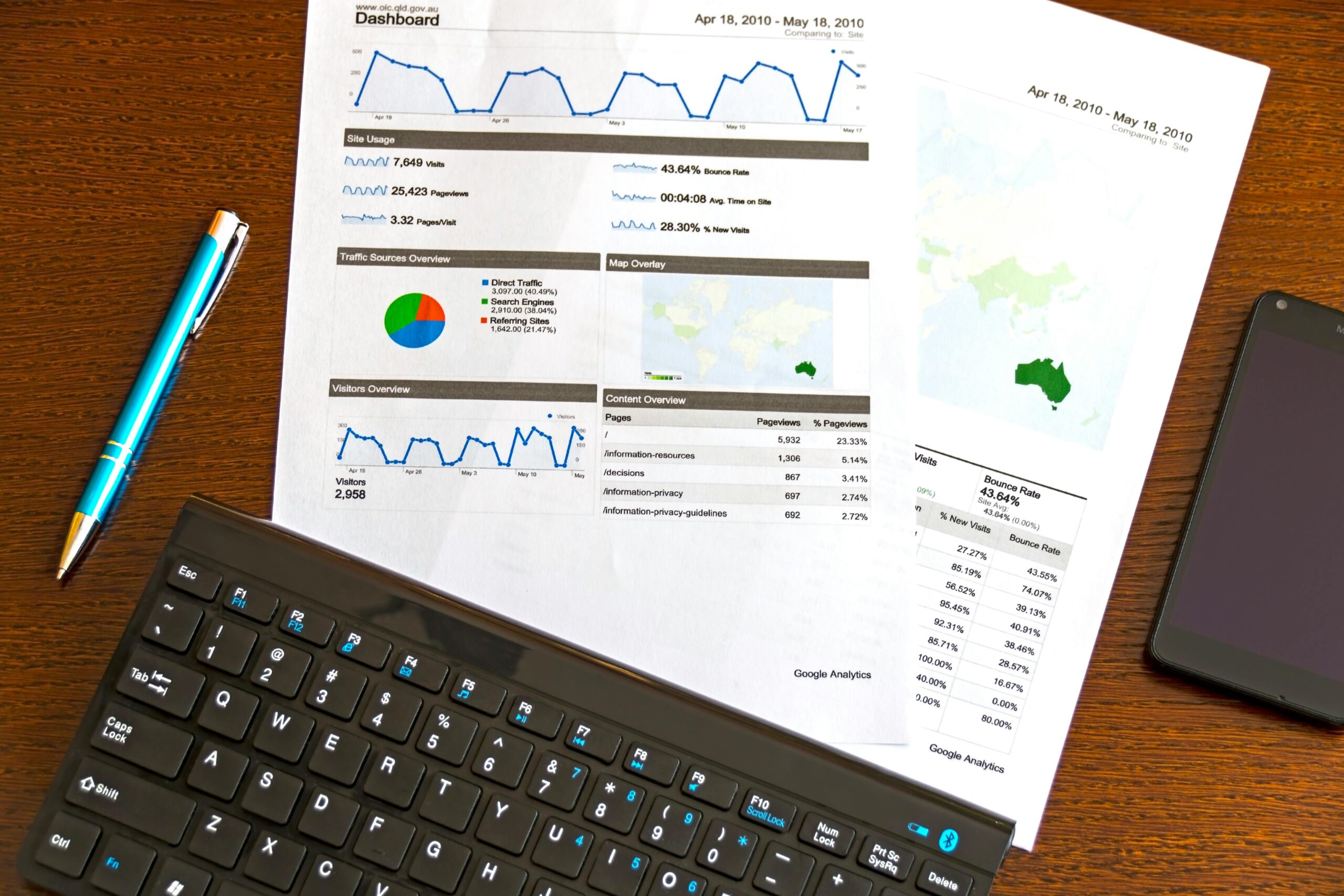Business Plan Writing Services
Consulting for Business Plans
The main goal of a business plan, which serves as the company's process roadmap, is to find and evaluate an existing business or opportunity by assessing its financial and techno-economic viability. By providing professional guidance, business plan consulting services help the company stay on course and accomplish its strategic goals and objectives. Under this, outside third-party consultants provide tailored, strategic guidance according to the business's nature and affecting circumstances. Therefore, this counsel will differ for a starting business plan compared to an established worldwide business.

Our Proficiency:
TRS, a retail consulting and outsourcing firm with its headquarters in India, provides a comprehensive variety of business plan consulting services that are customized to meet all business requirements. We have demonstrated industry proficiency in professional business plan writing services, business plan development, business plan market analysis, and new venture planning. The following are some of the main categories of business plans that we assist in creating:
- Startup business plan drafting service.
- Establishing the startup’s objectives.
- Selecting the entity structure that must be established for the startup.
- Analysis of the Startup’s Budget.
- Observance of regulations by the appropriate authorities for the startup.
- Risk Structure and Reduction for the New Business.
- Keeping an eye on the startup’s operations after launch.
- Business Plan for SME.
- A Business Plan for a Large Enterprise.

- Developing and establishing the SME’s goals and business action plan.
- Techniques for handling a crisis situation.
- Options for SME funding.
- Suggestions for adhering to regulations.

- Improving business plans.
- Business Planning Continues.
- New product development and service diversification.
- Possibilities for expansion and establishing corporate presences across multiple regions.

- Improving business plans.
- Business Planning Continues.
- New product development and service diversification.
- Possibilities for expansion and establishing corporate presences.
- Across multiple regions.

- Executive Summary (pilot plan and possible interest areas for the proposed company idea).
- Analysis of Business.
- Strategy for Marketing.
- Management Plan for Products and Services Financial Plan.

- Goods: The items’ description, including the inventory and packing.
- Analysis of the Market: examination of the competitive landscape and the market environment.
- Plan and Execution: Sales projections and a plan for acquiring new clients.
- Marketing Plan: Customer communication, branding, and mission.
- Web Plan: Every prerequisite for developing a website.
- Overview of Management: Employee needs, obligations, and associated expenses.
- Financial Plan: Cash flow, funding, predicted profit and loss, and budgeting
- Plan of Exit: Timelines for a strategic plan to transfer corporate ownership to investors or other businesses.

Approach:
A business plan that maximizes the use of an organization’s resources and aids in accomplishing its goals is created using a methodical process known as the “business plan methodology.” The technique is divided into the following structured phases, each of which addresses important project plan elements:
- Investment in capital.
- Operating expenses and costs.
- Statement of profit and loss.
- Statement of cash flow.
- The balance sheet.
- Statement of income.Business ratios and Break-even analysis.
- Working Capital management.
- Planning and Budgeting.
- Organizational structure, human resources, and management
- Find the legal framework for your business.
- Forecast of sales for technology development/R&D process design.
- Plan for personnel.
- Value Chain Connections in the Production/Making Process (Procurement, Suppliers, Partnerships, etc.).
- Logistics, Inbound and Outbound.
- Business insurance policy for the inventory process.
- Procedure for Distribution.
- Process for Customer Training and Product Support.
- Procedures and Policies for Customer Service.
- Internal Regulations.
- IT Infrastructure: Configuring Hardware and Software Management Systems (e.g., Sigma Six).
- Constant Process Enhancement or Efficiency in Operations.
- Describe the company’s personnel requirements and employee job descriptions.
- Advertise, conduct interviews, and hire staff.
- Assemble the group based on knowledge and abilities.
- Establish the business’s technological infrastructure, including its software and hardware plan.
- Create systems for billing, payments, CRM, accounts, and point of sale (POS).
- Creation, planning, and execution of the go-to-market strategy
User and buyer personas, the marketing team’s distinct value proposition, conformity to the competitive environment, etc. - The pre-marketing strategy Pre-launch and post-launch co-branding and advertising, as well as the development of a logo, brand tagline, website, email, and social media campaigns.
- Executives, marketing, sales, customer service, operations, development, production, accounting, human resources, compliance, and other departments are all prepared to respond to inquiries or requests from clients and the public during the launch.
- A strong public relations strategy and apparatus, notification of the launch date to all pertinent parties, and preparedness for a press release for all media channels.
- The product launch’s objectives and operational plan are prepared and sent to all relevant parties.
- Creating a strong and reliable distribution network, logistics, and supply chain: Companies should assess their stock to make sure there is a sufficient supply to satisfy demand. This can be accomplished by establishing a strong supply chain, collaborating closely with suppliers, and matching their maximum capacity with the capacity of production and distribution to scale in the event that demand levels decline.
- Marketing initiatives after launch: Maintaining consistent branding and advertising to establish a company’s reputation while connecting with journalists, bloggers, and influential people in the field.
- Test and improve advertising campaigns: Keep in touch with the media and PR firms, and take customer input into account immediately. In order to learn, shape strategy, optimize execution, and stay flexible in response to changing business needs, continuous testing is essential.
- The functions of marketing and sales are coordinated: Many firms find it difficult to align marketing and sales. The organization’s common goals, tactics, and success indicators must be understood and agreed upon by both parties through constant, open communication.
Closed-loop, - Transparent reporting procedure for every unit: This involves using data to show which messages and actions from Marketing, HR, Finance, Sales, Operations, and other departments are producing the best overall results and vice versa, i.e., which actions require corrective measures, in order to keep all stakeholders on the same page.
Key Components of a Business Plan:
The following are the essential components of a standard business strategy from a financial standpoint:

TRS offers expert business plan writing services.
This analyzes and calculates the likelihood of successfully completing the project by taking into account all pertinent project plan elements, including the technical, legal, economic, and scheduling aspects. Before spending time and money, program managers and investors weigh the benefits and drawbacks using feasibility and workability studies. IRR and NPV (net present value) are two important financial measures used in feasibility study. The difference between the present value of cash inflows and outflows over a given time period is known as net present value, or NPV. IRR is the rate of return at which the project's net present value (NPV) drops to zero and is used to determine how profitable possible investments might be. If the IRR is high and higher than your interest borrowing rate, the project is viable.

Operating costs (both one-time and ongoing)
Mergers and acquisitions, the purchase of real estate and equipment, extensive facility upgrades, severance compensation costs resulting from personnel reductions, or repair costs following an unexpected natural disaster or calamity are examples of one-time or non-recurring operating expenses. Regular or recurring costs are incurred during a business's regular operations and are included as indirect costs in the income statement, balance sheet, and cash flow statements. General and administrative costs, such as salary and wages, R&D expenses, marketing costs, travel and associated costs, IT costs, and depreciation that may be applied to property, equipment, or other corporate assets over an extended period of time are a few examples.

Revenue Projection for 3 years
Revenue forecasts are the estimated amount of money that a business is anticipated to produce over a given period of time, in this example three years. Frequently, these revenue estimates fall into one of three accounting periods: monthly, quarterly, or annual. Ideally, a combination of aggressive and conservative case scenarios can be used.An aggressive revenue estimate, for instance, might make the following assumptions: three to four marketing channels, one new product or service launched in the first year, five additional products or services introduced in each business segment in years two and three, a low price point for the base product, and a higher price for the premium product. Three years is often the time frame utilized for revenue estimates because it is sufficiently long to provide a business understanding. However, because business needs are changing so quickly and the environment of technology, marketing, economics, finance, and customer experience is constantly changing, longterm revenue estimates can occasionally be off.

Analysis of Breakeven
The sales revenue levels needed for a business to meet its essential expenses and remain afloat—that is, to run without turning a profit or losing money—are known as break-even analysis. Remaining over this break-even point is essential to any business's survival. Break-Even point (units) = Fixed expenses ÷ (Sales price per unit – Variable expenses per unit) is the formula to compute this, or in Sales INR: Sales INR = Fixed Costs ÷ Contribution Margin is the break-even threshold.

Repayment Time
The measurements for the payback period measure how long it takes for investment expenses to be recovered, or, to put it another way, how long it takes for an investment to break even. The payback length of an investment is closely related to its attractiveness quotient; that is, investments with shorter paybacks are more alluring. Businesses can utilize payback time calculations to determine the returns on energy-efficient technologies, including maintenance and upgrades, even though they are helpful for financing company plans and capital budgeting.

Calculations of Margin
One essential technique for comprehending business profitability is margin analysis or computations. It measures the company's earnings (or profits) in relation to its revenues and offers a strategic insight into how well the organization generates and retains money. One of the main financial goals of business planning is to display profit margins as a percentage of sales. A company's cash flow and profit margins would be strained if it prioritizes sales growth at the expense of excessive marketing and administrative expenses. Therefore, it is crucial for firms to drive and sustain revenues while also attempting to keep expenditures firmly under control by implementing clear-cut profit margin policies.

Calculations of Profitability (Gross and Net Profit)
A company's gross profit margin is the portion of sales that exceeds its cost of goods sold (COGS). A business is profitable above and beyond its real costs if its gross profit margin is bigger. On the other hand, the net profit margin percentage calculates the percentage of each rupee of revenue that is turned into actual profit. Revenue growth does not always translate into higher profitability. The net profit is calculated by deducting operational costs, taxes, and loan interest from the gross profit (revenue less COGS).

Customer metrics, such as basket size and walk-ins
Two important revenue-side customer measures that gauge the profitability and general financial well-being of retail operations are walk-ins/foot traffic and basket size. Monitoring foot traffic and walk-ins gives you a real-time snapshot of what's selling well and what needs to be improved. A new store location, a new display window design, a newly introduced loyalty program, or shopping seasons are some of the variables that affect them. The average basket size, which is determined by dividing the total number of units sold by the number of invoices, is a crucial retail metric that describes the quantity of goods bought in a single transaction. Understanding basket size and basket diversity (the total number of categories shopped) encourages walk-ins and foot traffic, which raises customer spending.

ROI
One key performance indicator (KPI) used to assess the profitability of an investment is return on investment, or ROI. Less evident elements like time, unstated expenses and fees, or even psychological elements like worry and strain should be taken into account when evaluating ROI. By calculating the ROI, investors can swiftly assess investment prospects and prospective returns on a variety of assets, saving valuable time and money. It can be computed as follows: ROI stands for return on investment, or net profit divided by total assets.

Statement of Profit and Loss (03 Years)
A balanced medium-term view is provided by the profit and loss (P&L) statement, a financial document that describes the company's earnings, expenses, and costs for a given time period, in this case three years. Every public limited company publishes the balance sheet quarterly and annually along with the cash flow and balance sheet. These P&L statements give banks, investors, and clients a realistic view of the company's overall revenue, debt load, and financial health.
Key Components of a Business Plan:
The following are the essential components of a standard business strategy from a financial standpoint:

TRS offers expert business plan writing services.
This analyzes and calculates the likelihood of successfully completing the project by taking into account all pertinent project plan elements, including the technical, legal, economic, and scheduling aspects. Before spending time and money, program managers and investors weigh the benefits and drawbacks using feasibility and workability studies. IRR and NPV (net present value) are two important financial measures used in feasibility study. The difference between the present value of cash inflows and outflows over a given time period is known as net present value, or NPV. IRR is the rate of return at which the project's net present value (NPV) drops to zero and is used to determine how profitable possible investments might be. If the IRR is high and higher than your interest borrowing rate, the project is viable.

Operating costs (both one-time and ongoing)
Mergers and acquisitions, the purchase of real estate and equipment, extensive facility upgrades, severance compensation costs resulting from personnel reductions, or repair costs following an unexpected natural disaster or calamity are examples of one-time or non-recurring operating expenses. Regular or recurring costs are incurred during a business's regular operations and are included as indirect costs in the income statement, balance sheet, and cash flow statements. General and administrative costs, such as salary and wages, R&D expenses, marketing costs, travel and associated costs, IT costs, and depreciation that may be applied to property, equipment, or other corporate assets over an extended period of time are a few examples.

Revenue Projection for 3 years
Revenue forecasts are the estimated amount of money that a business is anticipated to produce over a given period of time, in this example three years. Frequently, these revenue estimates fall into one of three accounting periods: monthly, quarterly, or annual. Ideally, a combination of aggressive and conservative case scenarios can be used.An aggressive revenue estimate, for instance, might make the following assumptions: three to four marketing channels, one new product or service launched in the first year, five additional products or services introduced in each business segment in years two and three, a low price point for the base product, and a higher price for the premium product. Three years is often the time frame utilized for revenue estimates because it is sufficiently long to provide a business understanding. However, because business needs are changing so quickly and the environment of technology, marketing, economics, finance, and customer experience is constantly changing, longterm revenue estimates can occasionally be off.

Analysis of Breakeven
The sales revenue levels needed for a business to meet its essential expenses and remain afloat—that is, to run without turning a profit or losing money—are known as break-even analysis. Remaining over this break-even point is essential to any business's survival. Break-Even point (units) = Fixed expenses ÷ (Sales price per unit – Variable expenses per unit) is the formula to compute this, or in Sales INR: Sales INR = Fixed Costs ÷ Contribution Margin is the break-even threshold.

Repayment Time
The measurements for the payback period measure how long it takes for investment expenses to be recovered, or, to put it another way, how long it takes for an investment to break even. The payback length of an investment is closely related to its attractiveness quotient; that is, investments with shorter paybacks are more alluring. Businesses can utilize payback time calculations to determine the returns on energy-efficient technologies, including maintenance and upgrades, even though they are helpful for financing company plans and capital budgeting.

Calculations of Margin
One essential technique for comprehending business profitability is margin analysis or computations. It measures the company's earnings (or profits) in relation to its revenues and offers a strategic insight into how well the organization generates and retains money. One of the main financial goals of business planning is to display profit margins as a percentage of sales. A company's cash flow and profit margins would be strained if it prioritizes sales growth at the expense of excessive marketing and administrative expenses. Therefore, it is crucial for firms to drive and sustain revenues while also attempting to keep expenditures firmly under control by implementing clear-cut profit margin policies.

Calculations of Profitability (Gross and Net Profit)
A company's gross profit margin is the portion of sales that exceeds its cost of goods sold (COGS). A business is profitable above and beyond its real costs if its gross profit margin is bigger. On the other hand, the net profit margin percentage calculates the percentage of each rupee of revenue that is turned into actual profit. Revenue growth does not always translate into higher profitability. The net profit is calculated by deducting operational costs, taxes, and loan interest from the gross profit (revenue less COGS).

Customer metrics, such as basket size and walk-ins
Two important revenue-side customer measures that gauge the profitability and general financial well-being of retail operations are walk-ins/foot traffic and basket size. Monitoring foot traffic and walk-ins gives you a real-time snapshot of what's selling well and what needs to be improved. A new store location, a new display window design, a newly introduced loyalty program, or shopping seasons are some of the variables that affect them. The average basket size, which is determined by dividing the total number of units sold by the number of invoices, is a crucial retail metric that describes the quantity of goods bought in a single transaction. Understanding basket size and basket diversity (the total number of categories shopped) encourages walk-ins and foot traffic, which raises customer spending.

ROI
One key performance indicator (KPI) used to assess the profitability of an investment is return on investment, or ROI. Less evident elements like time, unstated expenses and fees, or even psychological elements like worry and strain should be taken into account when evaluating ROI. By calculating the ROI, investors can swiftly assess investment prospects and prospective returns on a variety of assets, saving valuable time and money. It can be computed as follows: ROI stands for return on investment, or net profit divided by total assets.

Statement of Profit and Loss (03 Years)
A balanced medium-term view is provided by the profit and loss (P&L) statement, a financial document that describes the company's earnings, expenses, and costs for a given time period, in this case three years. Every public limited company publishes the balance sheet quarterly and annually along with the cash flow and balance sheet. These P&L statements give banks, investors, and clients a realistic view of the company's overall revenue, debt load, and financial health.
- Effectively manage your finances.
- Assign projects the best possible resources.
- Assure ongoing financing for ongoing obligations.
- Encourage confident financial decision-making and achieve your goals.
- Ensure enough money for all future initiatives.
- Determine issues before they arise (e.g., bringing up cash flow or finance issues).
- The function of a business planning consultant is summed up in the following chart:
- As a result, a business plan is always changing to meet the demands of the market, customers, and company. It is continuously updated.
- Money
- Any drafts, ideas, or opinions you may have about the business plan.
- Any other details that will aid in the development and execution of the business plan.
Following this preliminary conversation, we determine the conditions of engagement and begin working on the business plan. The following details are included in the draft plan:
- Business Overview,
- Executive Synopsis,
- Product Details,
- Financial Forecasts,
- Final Business Plan
In order to help you create your success narrative, our business plan writing service was designed with your company in mind. To guarantee appropriate and ideal business plan development, the plan is modified and edited as needed. Get in contact with TRS right now to discover your company’s full potential and take advantage of revolutionary, fresh growth prospects.





